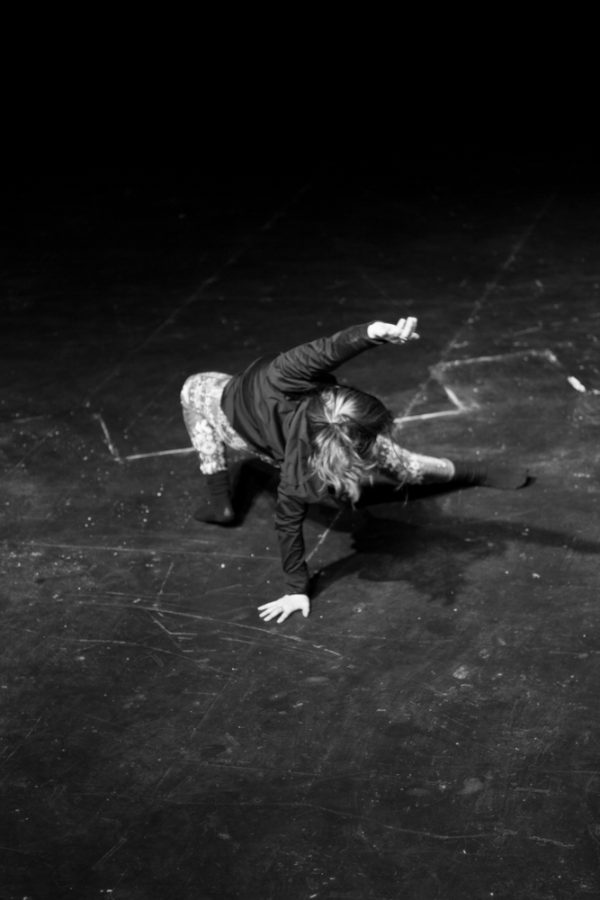Expressions through Movement – Photo Essay
December 5, 2017
The practice of dance presents itself in a multitude of forms of expression. Delving into the root of this expression requires an exploration of movement initiation and generation. The dance practice of “authentic movement” invites the mover into a generative space through an intense awareness of the body. The movers close their eyes in stillness, and wait for movement to be initiated by a thought, feeling, or sensation, simultaneously listening and responding to the body. In watching this practice unfold, the audience receives information that may be entirely different from what the mover experiences. To look deeper into this mode of expression and communication between both the self and the audience, three dancers shared their thoughts on authentic movement, performance, communication, and translatability of movement.
Heather Hamilton, senior:
When asking Heather what drives her to dance, she responded: “Most basically, it just feels really good to me, to express myself with my body and to get like deep inside the movement so that that’s all I’m thinking about.
“There’s something I have that can be translated through my movements and whether [the audience] receive[s] it and understand[s] it in the same way that I understand it, I don’t know if it matters, but that there’s something that they can see, that I can share or give or open up between me and the audience or between me and my fellow dancers and movers.
Amara Killen, first year:
Amara: “I think it really comes down to feeling yourself and your corporeal being, because so much of the time we’re caught up in our worries and frustrations and it’s all up here and we have to recenter ourselves and feel the ground beneath us and feel the sensations of our body, the air, the temperature. I think it’s an incredible way to learn something about yourself and find out truly how you’re doing. I get in my head a lot, I think a lot, and dance is a way for me to center myself again, and ground myself, and bring myself back to my body.”
Amara: “Really the most important way that you’re going to convey a message is if you are centered in that role as well, if you feel it within yourself. So I think there definitely is a difference in the process [of choreographing for an audience] but when you get onstage ultimately you’re doing it for yourself again.”
Amara: “Dance is the most incredible form of expression for me. I think if I could take that feeling and make it into a profession or make it into something I could do every single day of my life, I would do that.”
Amelia Bishop, senior:
“[Authentic movement] became this way to check in with my body and I was often surprised by the things that came out and this time it felt like, does my body remember this and does my body remember how to have this kind of conversation? And things don’t come up, it doesn’t just give me all that buried information right away.”
Amelia: “I just remember coming in day after day and being like wow I didn’t realize I was sad today until I came here, and it wasn’t just doing authentic movement that made me sad, it was doing authentic movement that let me tell me that I was sad, and I think conversation or listening is a beautiful way to put that. But there’s something about it already being there.”
Amelia: “That’s a really neat way of highlighting how our bodies can have this kind of intuitiveness inside of them that we don’t necessarily give credit to.”
Amelia: “It’s about knowing yourself and just being present.”






